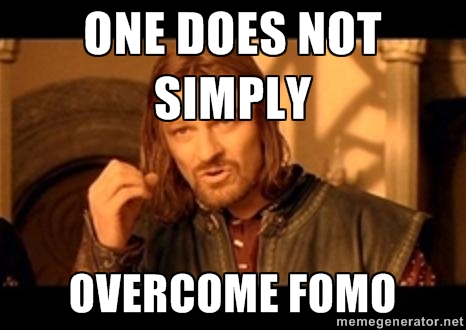May entry into the 11/24 Blog Carnival: Haves and Have Nots.
Revolution as a Game of Power: Running Revolts Through Faction Intrigue
In TTRPGs, revolution often means upheaval, chaos, and the rearrangement of power structures. Yet, there's no need to think of revolutions as purely mass-based uprisings. Drawing inspiration from settings like 700 Lordly Houses, I take a different approach: presenting revolution as a complex dance of factional influences, rivalries, and the tactical moves of a few skilled operators—namely, the players.
Revolution as a Network of Influences
Revolution can be seen as a struggle not only of the “Have Nots” rising against the “Haves” but also of competing factions jockeying for control, influence, and survival. This is a more localized, faction-oriented perspective, where individual agents—be they nobles, spies, or mercenaries—can have a significant impact. By focusing on factions rather than masses, players can engage with revolution on a scale that can be both digestible and intensely personal.
Why Small Groups Matter
In a faction-driven game, the actions of small groups are the levers that push change. This doesn’t mean the players alone can start or end a revolution; rather, they influence pivotal figures and factions whose decisions ripple through the fabric of society. For example, one lord’s choice to back a rebellion might turn the tide or fracture alliances. A revolutionary movement may rely on noble houses, secret guilds, or even criminal syndicates, each with their own interests and methods. As the players work with (or against) these factions, they impact the revolution in a way that feels organic and impactful.
Running a Revolution in Faction Turns
Using faction turns, as outlined by Of Cats and Books, is an ideal way to track the progress and status of various revolutionary factions. In these turns, factions make their moves: recruiting allies, making power plays, spreading influence, or crushing dissent. When players act, they influence a faction's standing or affect another faction’s plans directly, giving them real agency in the revolution.
Faction turns can unfold on a time scale that best fits your table, creating a timeline that charts the revolution’s growth or collapse. The players’ actions determine how their allies fare, who gains or loses influence or resources, and where the tipping points might occur.
Influence over Mass Action: The Key to Revolutions
When thinking of a revolution as a series of factional maneuvers, a single band of heroes isn’t responsible for winning or losing. Instead, they are agents of influence. Consider a few ways players can affect a revolution without leading a mass uprising:
Targeted Sway: Players can sway key NPCs within factions, negotiating or persuading them to join, remain neutral, or withdraw from the revolutionary movement. Instead of fighting in the trenches, players maneuver behind the scenes, manipulating those with direct control over the masses or at least small clusters of them.
Strategic Strikes: Just as in Blades in the Dark, where individual actions impact larger factional standings, players can conduct missions against specific targets. This could mean sabotaging supply lines, assassinating a tyrant’s right-hand agent, or liberating a charismatic revolutionary imprisoned by the ruling class.
Moral Manipulation: Revolutions often pivot on ideology. Players could spread misinformation, inspire loyalty, or discredit rivals to shift public perception and morale. This is where Night’s Black Agents-style investigative and manipulative gameplay shines, as players engage in the war for hearts and minds rather than swords and shields. The Vampyramid is your friend!
Personal Alliances and Betrayals: In a world like 700 Lordly Houses, allegiances are delicate. If players help a faction rise in the revolution, they’re setting the stage for power grabs and betrayals down the line. The revolution becomes less about one side winning or losing and more about who gains what in the aftermath.
Examples of Faction-Driven Scenarios
Betrayal at the Banquet: The players receive intelligence that a noble who sits on the fence between the ruling power and the revolutionaries is attending a private banquet. If they can sway or sabotage this noble’s allegiances, they could pull an entire family or network into the revolutionary cause or away from it. Success or failure here shifts the balance of power within the revolution. I might suggest Festivities if you need ideas.
The Assassination of a War Architect: A brutal general is leading oppressive measures that have kept the revolution contained. Removing this figure could change the tide. The players are tasked with planning and executing a subtle assassination, knowing that every faction involved will have its own reaction.
The Smuggling Chain: Factions often rely on supply lines and resources to operate. The players are hired by a faction to secure a route for smuggling arms or block a rival’s trade routes. In this scenario, players become the nerve center of factional warfare, making tactical decisions that impact the success of larger movements.
Conclusion: Agency and Balance
By presenting revolution as a series of factional skirmishes, rivalries, and negotiations, the process becomes something dynamic and immersive rather than a grandiose mass movement. This also preserves the tension and challenge for the players, as they never have total control but remain essential to shaping key events. In this approach, players are neither the entire revolution nor just passive witnesses—they are influencers, tacticians, and decision-makers. This style keeps revolutions interactive and allows for a balance of political intrigue, tactical moves, and high-stakes choices, providing a unique and layered game experience.
EDit 11/20 to add: Let's Talk Clocks is another helpful tip ... and Red Hand of Doom provides good insight on how to run those massive war campaigns by playing the party.
Note: Chat-GPT assisted with the compilation of this post.



